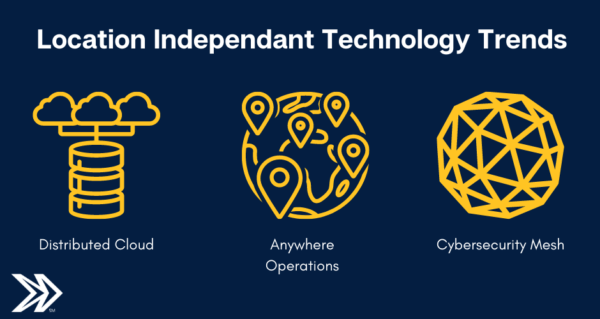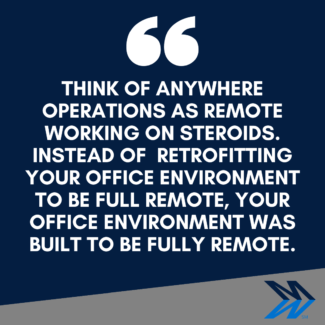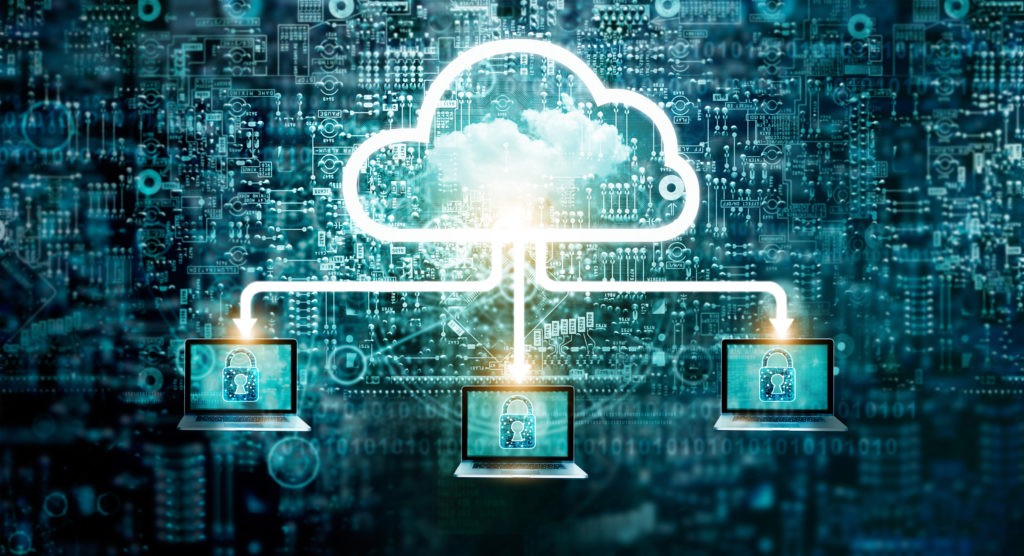November 3, 2020
By: Kim Morgan
Each year, research firm Gartner unveils the top strategic technology trends at its annual IT Symposium/Xpo America’s conference. This year was no different, except the conference was held virtually instead of in-person.
Indeed, a virtual symposium is probably the most “2020” thing right now. Gartner underscored how companies need to focus on building resilience and adapting to unavoidable disruptions. “The need for operational resiliency across enterprise functions has never been greater,” said Brian Burke, research vice president at Gartner.
“As organizations journey from responding to the COVID-19 crisis to driving growth, they must focus on the three main areas that form the themes of this year’s trends: people centricity, location independence and resilient delivery,” Burke said.
Last week we covered the first category: People-Centric Technology which focused on technologies that underscored how people interact with technologies, and how technologies can enhance every-day experiences.
This week, we introduce the next category: Location Independence.
Location Independence
 COVID-19 dramatically shifted the physical locations of customers, employees, suppliers, and entire organizational ecosystems. Location independence is crucial for businesses to function and succeed in a “together but apart” society.
COVID-19 dramatically shifted the physical locations of customers, employees, suppliers, and entire organizational ecosystems. Location independence is crucial for businesses to function and succeed in a “together but apart” society.
Within Location Independence, Gartner identifies three trends:
- Distributed Cloud
- Anywhere Operations
- Cybersecurity Mesh
Distributed Cloud
According to Gartner: Distributed cloud provides public cloud options to different physical locations. Essentially, the public cloud company maintains, operates and evolves the services, but physically executes at the point of need. This helps with latency issues, and also privacy regulations that require certain data to remain in a specific geographical location. It allows customers to benefit from public cloud and avoid costly and complicated private cloud solutions.
But cloud computing is nothing new? How is this different? Distributed cloud is just that – cloud services distributed over a variety of offerings. These offerings include:
- On- premises public cloud
- Internet of things (IoT) edge cloud
- Metro-area community cloud
- 5G mobile edge cloud
- Global network edge cloud
Distributed cloud differs from cloud models that rely on a centralized data center, hosted at the cost of the consumer. Technically, the public cloud markets people are most familiar with (AWS, Azure, Google Cloud etc) fit into the definition of distributed cloud. However, the main difference is their “edge services” aren’t actually on the edge, but in centralized data centers instead of devices at the network edge.
A distributed service business model involves a provider delivering a version of cloud services in a hardware and software combination. The provider would be in charge of managing and updating the hardware and software. Essentially, the distributed service approach is similar to a software-as-a-service (SaaS) option.
What is the end goal of a distributed cloud versus a central cloud? Speed and agility. The end user has expanded access to data and high-speed compute resources reducing latency. This is especially valuable in an “all remote” employee environment, which is exactly what COVID-19 delivered.

Anywhere Operations
Anywhere operations is just that – operate anywhere, without the need for on-premise infrastructure. Before COVID, businesses probably had this capability to some degree, but never had the need to test its capabilities since workers would come into the office every day, and utilize on-prem network resources.
Anywhere operations is more than just “working remote” or “operating remote”. This model stresses “digital first, remote first”, meaning that the transition from on-site to remote is seamless for the end user, and scalable yet secure for the IT administrators. Providing this experience requires changes to technology infrastructure, management practices, as well as security policies and practices.
 According to Gartner, this technology foundation is made up of five building blocks:
According to Gartner, this technology foundation is made up of five building blocks:
- Collaboration and productivity, which includes cloud office suites, digital white boards, and collaboration and meeting solutions
- Secure remote access, tools like passwordless multifactor authentication (MFA) and secure access service edge (SASE)
- Cloud and edge infrastructure
- Qualification of the digital experience
- Automation to support remote operations
Think of anywhere operations as remote working on steroids. Instead of retrofitting your office environment to be full remote, your office environment was built to be fully remote.
Cybersecurity Mesh
If your users can work from anywhere, how do you secure your network? Gartner defines security mesh as “distributed architectural approach to scalable, flexible and reliable cybersecurity control”, meaning any person or thing trying to access your network or network resources in any location is provided a level of security.
This model does 2 things 1. Places all assets and devices inside security parameters, rather than outside. Examples of this include an employee hopping on to the company’s Wi-Fi from a personal smartphone, or the smart refrigerator in the breakroom trying to access the internet.
Basically, this gets companies and organizations ahead of the game when it comes to security. Rather than reacting to unknown breaches, these policies and practices put a “mesh” around your entire digital ecosystem and require access in. It decouples policy enforcement from policy decision making via a cloud delivery model and allows identity to become the security perimeter.
Next week we will be wrapping up this series with a look at the third, and final of the three themes: Resilient Delivery. This theme emphasizes how to weather through a disruption like a natural disaster, or global pandemic, and makes recommendations on what systems need to be in place to avoid a “next time”.
About Mindsight
Mindsight is industry recognized for delivering secure IT solutions and thought leadership that address your infrastructure and communications needs. Our engineers are expert level only – and they’re known as the most respected and valued engineering team based in Chicago, serving emerging to enterprise organizations around the globe. That’s why clients trust Mindsight as an extension of their IT team.
Visit us at http://www.gomindsight.com.
About the Author
Kim Morgan is part of the Marketing Department at Mindsight. Since 2007, she has devoted her career to using digital media to educate and effectively communicate a variety of topics at all levels of expertise. Kim’s favorite part about Mindsight is how team members are encouraged to always be curious, and continue developing not only professionally, but also personally. When not working, she can be found toting her 4 kids around in her sweet sweet minivan while rocking out to hits from the late 90’s and early 2000’s.


